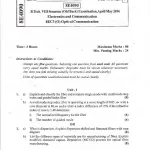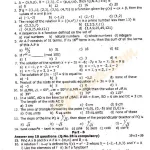What unusual event does the author notice one Sunday afternoon?
While doing his homework, the author smells smoke and sees it seeping through the ceiling seams, indicating a fire in the house.
How does the author’s mother react to the fire?
She initially runs out with her son but then rushes back inside to retrieve important documents and photographs of her late husband.
Why does the author break down in tears after the fire?
He is overwhelmed by the loss of his home, belongings, and the disappearance of his cherished cat.
What makes the author feel embarrassed at his new school?
He attends school wearing borrowed clothes and shoes, lacking his usual school supplies, which makes him feel out of place.
How is the bond between the author and his cat depicted?
The author describes rescuing his cat as a kitten and their close companionship, highlighting their deep affection for each other.
Where was the cat found after the fire, and who returned it?
The cat had run away during the fire and was found by a kind woman who later returned it to the author.
How do the author’s schoolmates support him after the fire?
They collect school supplies and clothes for him, showing kindness and helping him feel accepted.
What is the significance of the statement “My cat was back and so was I”?
It signifies the author’s emotional recovery and return to normalcy after reuniting with his cat.
How does the author feel about his new school initially?
He feels isolated and misses his old friends and teachers, struggling to adjust to the new environment.
What role do the author’s old teachers play in his adjustment?
They encourage him to participate in school activities and assure him that he will eventually feel at home.
Describe the author’s experience during the fire.
He and his mother escape the burning house, but he is distressed by the loss of his home and the disappearance of his cat.
How does the community respond to the author’s situation?
Neighbors and schoolmates offer support, providing essentials and emotional comfort.
What lesson does the author learn about people through this experience?
He realizes the importance of community and the kindness that people can offer in times of need.
How does the author’s perspective on life change after the incident?
He becomes more appreciative of relationships and the support system around him.
What does the story convey about the concept of ‘home’?
It emphasizes that a home is not just a physical structure but the emotional bonds and memories associated with it.
How does the author cope with the loss of his belongings?
Through the support of his community and the return of his cat, he finds solace and begins to rebuild his life.
What emotions does the author experience throughout the story?
He goes through fear, loss, embarrassment, gratitude, and ultimately, a sense of belonging.
How does the author describe his relationship with his cat?
He shares a deep bond with his cat, considering her a source of comfort and companionship.
What actions demonstrate the mother’s love and priorities during the fire?
She risks her life to save important documents and sentimental items, highlighting her values and love for her family.
How does the author’s experience reflect the theme of resilience?
Despite the traumatic event, he adapts, finds support, and emerges stronger, showcasing human resilience.
What role does the school environment play in the author’s recovery?
The welcoming and supportive nature of his schoolmates helps him regain confidence and a sense of normalcy.
How does the author’s view of his new school change over time?
Initially feeling alienated, he grows to appreciate and feel connected to his new school community.
What significance do the photographs and letters hold for the mother?
They are cherished memories of her late husband, representing love and the past.
How does the author express his gratitude towards those who helped him?
He acknowledges their kindness and the impact it had on his healing process.
What does the story suggest about the importance of empathy?
Empathy from others plays a crucial role in the author’s emotional recovery and sense of belonging.
How does the author’s experience influence his understanding of community?
He learns that community support is vital in overcoming personal tragedies.
What message does the story convey about dealing with unexpected challenges?
It highlights the importance of resilience, support systems, and the human capacity to adapt.
How does the author’s relationship with his peers evolve?
From feeling like an outsider, he becomes integrated and forms meaningful friendships.
What role does the cat play in the author’s emotional journey?
The cat symbolizes comfort, continuity, and the restoration of normalcy in his life.
How does the author depict the aftermath of the fire?
He describes the loss, the support received, and the gradual rebuilding of his life and home.
What insights does the story provide about teenage struggles?
It sheds light on feelings of isolation, the desire for acceptance, and the impact of unforeseen events on adolescents.
How does the author’s experience shape his character?
He becomes more empathetic, appreciative, and resilient as a result of his experiences.
What does the story teach about the value of possessions versus relationships?
It emphasizes that relationships and emotional connections hold more value than material possessions.
Recommended Indian Books for “A House is Not a Home” – Question-Answer Support
-
NCERT Class 9 English Supplementary Reader – Moments
Author: NCERT Faculty
Publisher: National Council of Educational Research and Training
Content Type: Includes the original chapter, glossary, and basic comprehension, short, and long answer questions. -
English Language and Literature Class 9
Author: Full Marks Team
Publisher: Full Marks Pvt. Ltd.
Content Type: Summary, textual and extra questions, value-based and exam practice sets. -
Class 9 English Moments – Reference Book
Author: Oswal Publishers Team
Publisher: Oswal Publishers
Content Type: Chapter-wise explanation, theme, character sketch, solved and model Q&A, MCQs. -
Xam Idea English Class 9
Author: Editorial Board
Publisher: VK Global Publications Pvt. Ltd.
Content Type: In-depth Q&A, practice tests, HOTS questions, integrated grammar with chapter linkages. -
Evergreen Self-Study in English Language & Literature – Class 9
Author: Usha Narwal
Publisher: Evergreen Publications
Content Type: Word meanings, literary appreciation, character-based questions, and self-assessment worksheets. -
Together With English Language and Literature – Class 9
Author: Rachna Sagar Experts
Publisher: Rachna Sagar Pvt. Ltd.
Content Type: Quick revision notes, practice sets, NCERT-based question bank, and past year Q&A. -
All in One English Language & Literature – Class 9
Author: Arihant Experts
Publisher: Arihant Publications
Content Type: Topic-wise analysis, concept review, value-based and skill-based Q&A, sample papers. -
Golden English Guide for Class 9
Author: N.K. Aggarwala
Publisher: New Age International Publishers
Content Type: Textbook solutions, long and short questions, grammar-based questions, and summary. -
MTG 100 Percent English Class 9
Author: MTG Editorial Board
Publisher: MTG Learning Media Pvt. Ltd.
Content Type: Learning outcomes, analytical questions, key points, and chapter-based worksheets. -
CBSE Chapterwise English Language & Literature Class 9
Author: Arihant Experts
Publisher: Arihant Publications
Content Type: Chapter-wise previous years’ questions, detailed explanations, and answer hints. -
S.Chand’s English Reader – Class 9
Author: Meena Singh, O.P. Singh
Publisher: S. Chand Publishing
Content Type: Simplified explanations, vocabulary, detailed Q&A, and grammar enhancement tasks. -
MBD English Guide – Class 9
Author: MBD Group
Publisher: MBD Publishers
Content Type: Summary, interpretation, model answers, creative writing and unseen comprehension sets. -
Cordova Learning Series – Class 9 English
Author: Dr. Reeta Sahney
Publisher: Cordova Publications
Content Type: NCERT chapter solutions, character insights, comprehension tests, and HOTS questions. -
Oxford Educate English Companion – Class 9
Author: Oxford Educate Team
Publisher: Oxford University Press India
Content Type: Textual understanding, vocabulary exercises, thematic discussions, and sample answers. -
Cambridge Connection English – Class 9
Author: Usha Raman
Publisher: Cambridge University Press India
Content Type: Holistic learning with context-based exercises, writing skills, and chapter-aligned Q&A. -
Viva Education English Guide – Class 9
Author: Editorial Team
Publisher: Viva Education
Content Type: Key points, mixed question formats, grammar drills, and guided reading activities. -
Morning Star Total English – Class 9
Author: P.N. Kapoor
Publisher: Morning Star
Content Type: Grammar-usage-based Q&A, textual exercises, interpretation-based essay writing. -
Brain Mapping Academy English Solutions – Class 9
Author: Academic Experts
Publisher: Brain Mapping Academy
Content Type: Skill-based exercises, mind maps, subjective Q&A, and chapter overview charts. -
Target Publications – English Yuvakbharati (State Board aligned)
Author: Target Editorial
Publisher: Target Publications Pvt. Ltd.
Content Type: Detailed chapter-wise solutions, multiple writing formats, and open-ended thinking questions. -
Learner’s English Companion – Class 9 CBSE
Author: Devraj Ghosh
Publisher: Saraswati House Pvt. Ltd.
Content Type: Explanation, vocabulary, theme and tone-based questions, along with practice tests.
A House Is Not a Home Question Answer – Expert Insights for Class 9 Students
The chapter “A House Is Not a Home” from the Class 9 English supplementary reader Moments is a deeply emotional and meaningful piece that goes beyond the literal understanding of shelter. Students often look for structured and thoughtful answers that reflect both comprehension and critical thinking. This article offers valuable insights and sample responses that help you frame strong answers for exams or assignments.
In this chapter, the story revolves around a teenager who faces personal loss after a fire destroys his home. It explores themes like change, loneliness, emotional recovery, and the power of kindness. As a student, when answering questions from this story, it’s important to reflect on both the plot and the feelings of the narrator.
How to Approach ‘A House Is Not a Home’ Question Answers
First, read the chapter thoroughly. Understand the emotional flow of the story — from the protagonist’s sadness and anxiety to hope and healing. Questions often focus on character emotions, the sequence of events, and moral takeaways. Writing emotionally intelligent answers helps score better.
When responding to short-answer questions, focus on clarity and precision. Avoid retelling the entire story. Instead, highlight key details, such as how the narrator felt displaced in a new school or how the return of his pet cat symbolized hope and restoration.
Long-answer questions usually ask for your interpretation of key events or characters. Here, structure your answers with an introduction, explanation, and a personal reflection or opinion. For instance, if asked about the significance of the title, explain how “home” refers to emotional connections rather than just a structure.
Recommended Answer Patterns
Use point-wise structures wherever possible in long answers. Include character traits like resilience, sensitivity, or transformation, and support them with events from the story. For example, the author’s embarrassment at school shows his vulnerability, while his reaction to the community’s support shows his gratitude.
Try to incorporate keywords such as ‘Class 9 English Moments’, ‘CBSE question answers’, ‘A House Is Not a Home summary’, and ‘chapter-wise solutions’ in your preparation. This also helps in digital research and organizing notes effectively.
Expert Tip for Exams
Teachers and examiners appreciate answers that go slightly beyond the book. Connect the story to real-life situations or lessons. Reflect on the emotional growth of the narrator and mention how kindness from strangers helped him rebuild his identity. Such answers reflect maturity and earn higher marks.
Also, don’t forget to revise vocabulary, as several comprehension questions test understanding of key terms and phrases from the chapter. Practice writing your answers instead of just reading them. This builds confidence and improves retention.
FAQ for a house is not a home question answer
What is the main theme of the chapter ‘A House Is Not a Home’?
The main theme is emotional healing after loss, and the importance of relationships over material possessions.
How should I write long answers for this chapter in exams?
Begin with a brief introduction, explain the key events or emotions, and end with a personal reflection related to the question.
Why is the story called ‘A House Is Not a Home’?
It shows that a physical house is different from a home, which is made through love, connection, and emotional comfort.
What kind of questions are asked from this chapter?
Common questions include character analysis, theme-based long answers, value-based reasoning, and emotional response-type questions.
What does the cat symbolize in the story?
The cat represents hope, companionship, and emotional recovery for the narrator after the trauma of the fire.
Latest Posts
- Step-by-step guide to download and apply for jee mains admit card 202
- Comprehensive 2025 government holidays and recruitment details for job seekers
- JEE Mains Admit Card 2025: Your Step-by-Step Guide to Downloading the Hall Ticket
- Everything You Need to Know About 2025 Government Holidays Recruitment
- Comprehensive Guide to rrb d group recruitment 2025 – Eligibility, Vacancies, and Application
- Detailed guide to nps trust recruitment 2025 vacancies, eligibility and apply process
- Comprehensive guide to hpcl recruitment 2025 notification, vacancies, and application process
- ignou bed admission 2025 complete recruitment guide with eligibility and process
- Comprehensive Guide to Indian Army Agniveer Recruitment 2025 Notification and Jobs
- Everything You Must Know About CBSE Board Exams 2025 Changes & New Rules






